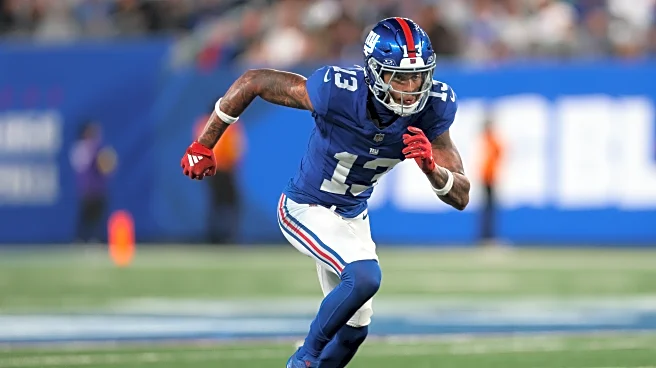What's Happening?
The recent NFL trade deadline has led to significant changes in the salary cap outlook for several teams. The New York Jets traded cornerback Sauce Gardner to the Indianapolis Colts and defensive lineman
Quinnen Williams to the Dallas Cowboys. These trades have altered the salary cap dynamics, with the Jets increasing their cap space from $11.8 million to $18.7 million. The Colts acquired Gardner without a major shift in their cap due to his rookie contract, while the Cowboys adjusted their cap space after acquiring Williams and linebacker Logan Wilson. Other notable trades include Rashid Shaheed to the Seattle Seahawks and Jakobi Meyers to the Jacksonville Jaguars.
Why It's Important?
The trades have significant implications for the salary cap management of NFL teams. By acquiring draft picks and adjusting player contracts, teams like the Jets can strategically plan their financial resources for future seasons. The Colts and Cowboys benefit from acquiring experienced players to strengthen their defenses, potentially improving their competitive standing. The salary cap adjustments reflect the dynamic nature of NFL team management, where financial planning is crucial for maintaining a competitive edge. These moves may influence other teams to reevaluate their cap strategies and player acquisitions.
What's Next?
Teams will continue to monitor their salary cap situations as they integrate new players and prepare for the remainder of the season. The Jets, with increased cap space, may explore additional trades or signings to enhance their roster. The Colts and Cowboys will focus on maximizing the impact of their new acquisitions on the field. As the NFL season progresses, teams will assess their performance and make necessary adjustments to their strategies, potentially leading to further player movements and cap management decisions.
Beyond the Headlines
The trade deadline highlights the complexities of managing player contracts and salary caps in professional sports. It underscores the importance of strategic financial planning and the impact of player movements on team dynamics. The trades also raise considerations about the balance between immediate performance and long-term growth, as teams navigate the challenges of maintaining competitiveness while planning for future seasons.













